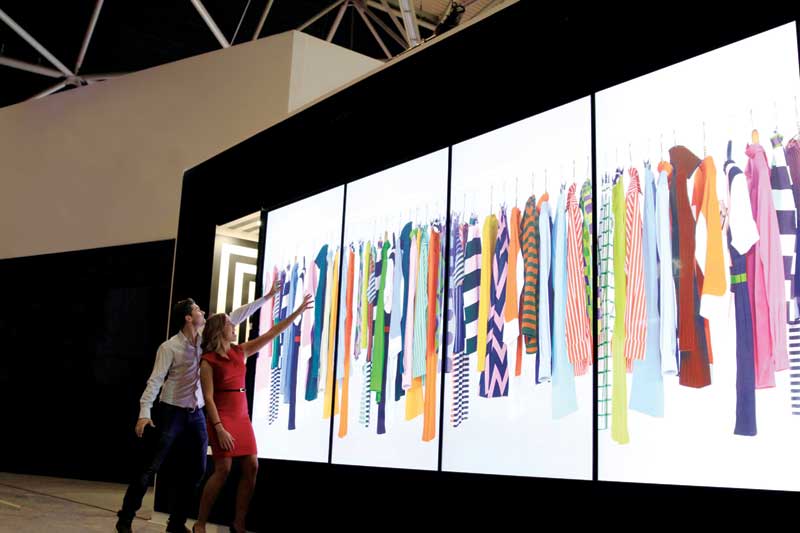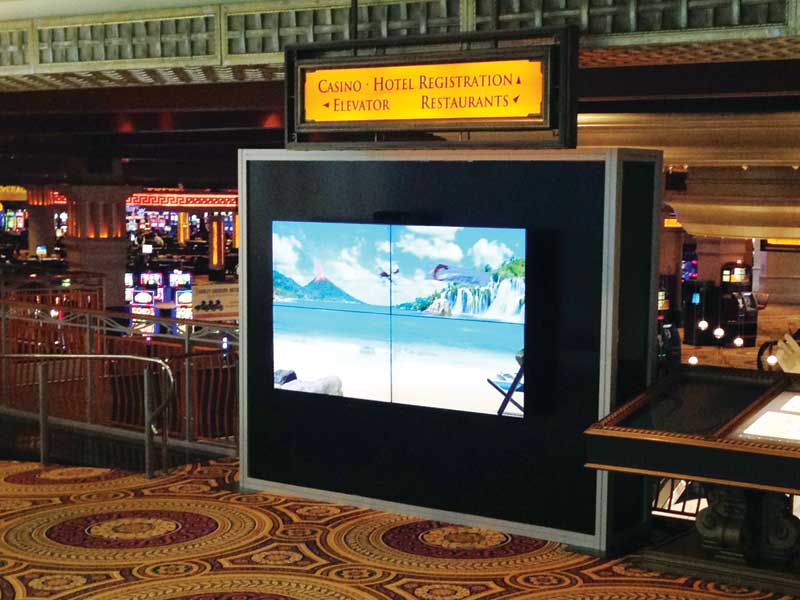
Images courtesy Samsung
By Lyle Bunn
The flat-panel liquid crystal display (LCD) is a highly visible element of digital signage applications. During the specification and selection process, it becomes clear that many options are available in the market today. It is important to differentiate between panels for use in interior- and exterior-grade housing, based on some of the same principles that apply to light-emitting diodes (LEDs) for use in digital billboards and other large-format displays.
Digital signage customers tend not to get very excited about flat panel selection unless their deployment will be very large-scale or very high-profile, but the technology behind their displays is key to their networks’ success. Smaller system integrators, who are expected to provide trustworthy, fact-based objectivity, usually recommend products they are most familiar with, though they are advised to assess a wider range of models, given continuing advancements in technological features. Larger system providers and operators, meanwhile, operate their own labs as testing facilities to ensure the most suitable flat panel is selected for each customer’s purposes. This is the case with Stratacache, for example, which provides digital signage displays for clients like McDonald’s and Walmart.
The cost/benefit analysis
The lines appear to have been blurring between consumer- and commercial-grade LCDs, with descriptors like ‘prosumer’ or ‘light-duty commercial’ becoming increasingly common. This points to the need for a deeper assessment of available options, as the technology that lies ‘under the hood’ is what matters most to a cost/benefit analysis.
An LCD’s cost reflects its production, service and markup, while its benefits reflect its functionality and expected lifespan. When defining the relationship between cost and benefit, it is typical to hear the phrase ‘good enough.’ And too often, the selection decision is made with a bias toward a well-known brand name, an appealing appearance and a low cost.
While a display is indeed the most visible element of a digital signage system, the costs of flat panels have all declined over the years, to the point where they represent a minimal proportion of total system costs. Over the life of a network, certainly, content will far outweigh the costs of any other elements.

LCDs have become available in larger sizes over the years.
Photo courtesy LG Electronics
Further, a handful of manufacturers dominate the supply of commercial-grade LCDs for digital signage, with each offering a range of sizes and operating features, with a corresponding range of prices. Determining which best meets a project’s specification depends not only on size, but also on shape, bezel width, thickness, ease of installation, inputs, integrated processing, controls, viewing angles, warranty terms, energy conservation capabilities and long-term reliability.
CCFLs vs. LEDs
LCDs that are backlit with cold-cathode fluorescent lamps (CCFLs) are generally less expensive, thicker and heavier than those illuminated with LEDs. While CCFL LCDs have been the most widely used type for digital signage to date, some panel manufacturers are now discontinuing them in favour of the performance and energy efficiency of LED LCDs, which are lit either with a matrix of LEDs behind the screen or with an array of side-mounted LEDs.
LED LCDs are similar in many ways to CCFL LCDs, but offer a sharper, clearer image, brighter colours and improved contrast. They also reduce operating costs, as they consumer up to 50 per cent less power than CCFLs. The slimmer profile of LEDs is also beneficial, as some commercial LCDs are now just a few millimetres deep, compared to up to 127 mm (5 in.) for CCFL LCDs, and therefore can be installed in more locations with tighter tolerances. Both a narrow bezel and minimal depth will allow a display to seem ‘modern’ over a longer period of use.
Consumer vs. commercial
As for comparing a consumer-grade TV with a commercial-quality flat panel display, the decision should be easy. Consumer TVs are engineered for as little as two to four years of use, assuming three to four hours of viewing per day. Commercial-grade panels, on the other hand, are engineered for more than 60,000 duty hours.

EnVu and Calgary-based Carmanah Signs, both divisions of Stratacache, recently developed a responsive video wall for Caesars Windsor Casino in Windsor, Ont.
Photo courtesy Stratacache
It is common for digital signs to operate 18 hours a day, 365 days a year, which means they run 6,570 hours per year. This is why a commercial-grade display is so important, assuming the network is planned for an industry-average four- to eight-year lifespan.
Warranties reflect the difference, as they tend to be for one year for consumer TVs versus three to four years for digital signage displays. Further, consumer TVs are not designed to operate in portrait (vertical) mode, which has become popular for many digital signage applications, and they usually lack the controls and inputs necessary for optimizing display performance.
Some of the commercial-grade components designed to prolong the life of a display are those that ward off excessive heat, dust and humidity. A conformal coating, for example, is a thin polymer film or chemical coating that is applied to displays’ circuit boards to protect them against harsh environmental factors. Once applied, the coating conforms to the circuit assembly to keep water vapour and solid debris out.
Both commercial-grade components and LEDs can be effectively cooled by convection, negating the need for supplemental fan-based cooling. Convection has several advantages over fans, as it reduces noise, consumes less electricity and pulls less contaminated air into the workings of the display.
The International Electrotechnical Commission (IEC) has developed ingress protection (IP) ratings to define the degree to which a specific enclosure keeps dust and moisture out. An IP5X certification, for example, means a display has passed rigorous tests to ensure it is dustproof.





